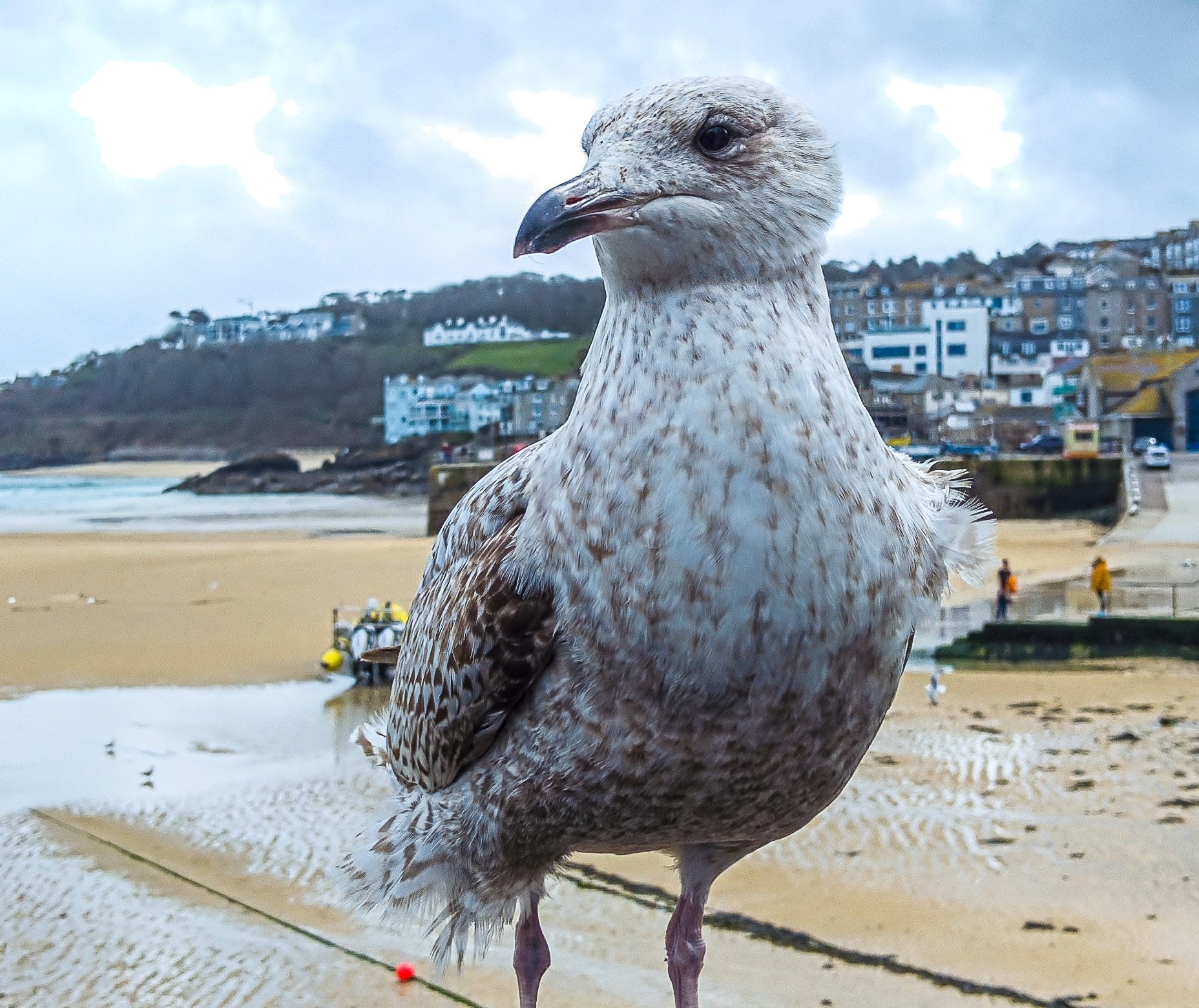
You are looking at a seagull.
This one happened to be perched on top of a small hut on the beach in St. Ives, Cornwall, England.
Seagulls are common birds, but this photograph is rather uncommon.
That's because it was shot with the Light L-16.
The Light is still an experimental camera, and it is not yet ready for video - it only shoots stills, but it will be in video soon.
We are interested in the L-16 because it represents an entirely new concept in photography.
I have been shooting with a Hasselblad H4D for some time now. The Hasselblad is a great camera, but it is big and heavy. The lenses are enormous and of course, for each focal length, you have to pack and carry a separate lens. The lenses are also astronomically expensive, thousands and thousands for each lens. The H4D body along costs $40,000. The H4D gets 40 MPXL resolution, which is impressive.
What is more impressive is that the Light L-16 gets 59 MPXL resolution, and the camera (and all 16 lenses) costs $1995.
How well does it work?
Here's a more detailed close up from the photo above.
When you take a photo with the L-16, you are actually taking 16 different exposures, 16 different focal lengths, but you are doing it all at the same time. The vast 59 MPXL file encompasses all the data from all 16 lenses and makes them all available to you, all at the same time.
It's still in beta.
It is, I have to admit, a bit hard to figure out.
It's not an Apple product, so it is far from intuitive.
And, as it is so new, you can't find a bunch of explanatory videos on YouTube.
And... it doesn't come with an instruction manual!
(like I said, beta... but interesting)
to see more reviews of the L-16, to see more reviews of the L-16, check out this link.



